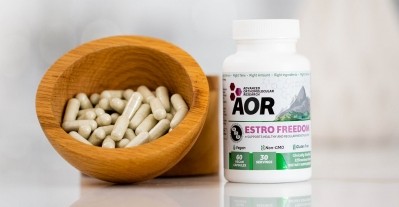Editor's Spotlight
Hydrogen supplement developer cites science, seeks to distance himself from ‘magic’ waters

Different ways to manipulate the structure of water has been the story line trickling through an ocean of pseudoscience, Tarnava admits. It’s one of the first hurdles he has had to clear when trying to make the case that there is credible science behind molecular hydrogen supplementation.
No magic pill, or magic water, either
“Water is just a convenient delivery vehicle. It has been shown that molecular hydrogen in water is about 100 times more effective as a delivery vehicle than inhalation,” Tarnava told NutraIngredients-USA.
“But that has been one of the big issues I’ve come across. There is such a prevalence of ‘magic’ water out there,” he said.
Tarnava said there have more than 60 recent, well designed, highly credible studies on molecular hydrogen as an ingredient. It has been studied for its antioxidant effects in mitochondrial function in older subjects, as a support in the amelioration of nonalcoholic fatty liver disease and other indications.
Innovation bent
Tarnava’s history with the ingredient began with his background in entrepreneurship and athletics. He was coming off an intense entrepreneurial stretch having built out his previous endeavor.
“My background is in innovation,” Tarnava told NutraIngredients-USA. “My previous company was based on an innovation on a breathalyzer vending machine. I put that machine into something that was the size of a shoebox so that it could go into a bar.”
Tarnava said one of the issues with breathalyzers is the need for frequent, expensive recalibration. His machine used replacement cartridges that were significantly cheaper than servicing the previous types of machines.
“It was a profitable business. We put the machines in something like 12,000 to 13,000 locations,” he said.
“Around that time I was competing in cross fit and in martial arts, too. I got pretty sick; I still don’t know what it was. A virus of some sort,” he said.
“I had done a 54-inch plyometric box jump, and suddenly I couldn’t jump off the floor. I developed arthritic joints. I started fainting. I started poking around on PubMed for things that could manage my inflammation and hydrogen kept popping up,” he said.
Keeping hydrogen in solution
Tarnava said he invested $4,500 into a hydrogen ionizer machine that purported to boost the hydrogen content of water. But he said the machine didn’t work; at least he showed no decrease in pain or other inflammation symptoms. While the water that came out of the machine seemed to have no particular health properties, it did help an idea germinate, he said.
“What I didn’t know then is that the ionizer wasn’t putting an efficacious dose into the water,” he said.
Tarnava his earlier entrepreneurial efforts taught him that bringing on good talent early is the best way to bootstrap innovation. In his hydrogen water company, called DrinkHRW, he partnered early on with chemist Richard Holland, PhD, who did his doctoral work at the Institute of Cancer Research at the University of London.
Keeping the hydrogen in the water long enough for the consumer to swallow it and for it to get into the stomach is one of the key issues, Tarnava said. Most systems, his previous ionizer included, create bubbles in the water that are too big and don’t last long enough for the hydrogen to get where it needs to go.
NDI Notification
With Holland’s help and after what Tarnava called hundreds of iterations, the pair came up with an effervescent tablet using metallic magnesium to create a thick cloud of hydrogen nano bubbles that are stable long enough. The technology showed enough promise that Tarnava invested in submitting a New Dietary Ingredient Notification to the US Food and Drug Administration.
Tarnava said he recently received a no objection notification from FDA, giving his company the gold standard of regulatory cover in the US dietary supplement marketplace.
Building the research
Tarnava said that as a way to build out the science behind his product he has been donating tablets for use in research studies.
One recent study using his tablets found that middle aged women shoed benefits in body composition, metabolic profiles and mitochondrial function. Another study that is making its way through the review process showed a boost in VO2 max among older subjects, probably as a result of their being able to recover better, he said. Another study that is still in a more preliminary stage has shown a reduction in peak heart rate with exercise among younger subjects, Tarnava said.
Tarnava said one thing that is still not fully understood about the ingredient’s health effects is why focused supplementation can deliver these benefits, when hydrogen is ubiquitous in the body and in the environment.
“You already make several liters of hydrogen in your intestines every day from microbial action,” Tarnava said. “But there is some evidence that a brief boost in the molecular hydrogen levels is what’s important, rather than a steady level of homeostasis.”
Tarnava sells several supplements featuring the technology on his website, DrinkHRW.

















